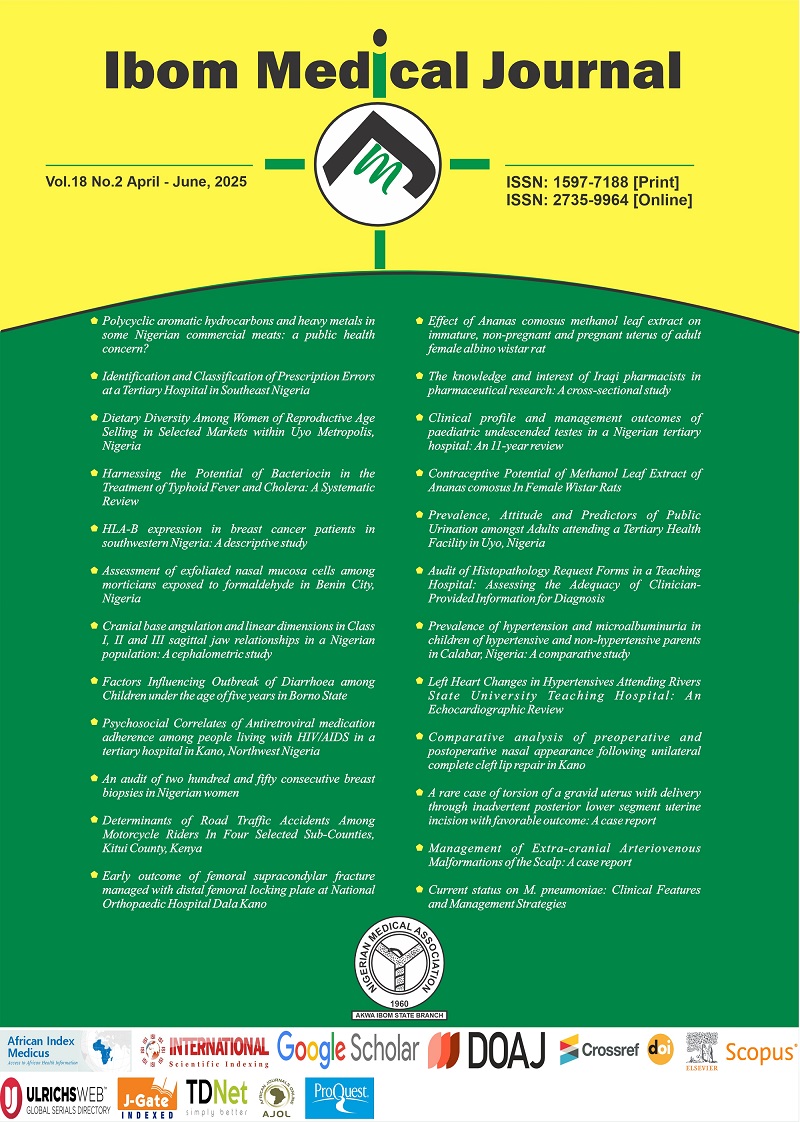Harnessing the Potential of Bacteriocin in the Treatment of Typhoid Fever and Cholera: A Systematic Review
DOI:
https://doi.org/10.61386/imj.v18i2.660Keywords:
Bacteriocin, Salmonella typhi, Vibrio cholerae, Typhoid fever, CholeraAbstract
Background: Typhoid fever kills 135,000 to 230,000 people every year and affects an estimated 11–21 million people globally. About 95,000 people die annually from cholera, and an additional 2.86 million get infected. Bacteriocins have been reported to inhibit the growth of various pathogens such as Salmonella typhi and Vibrio cholerae.
Objective: The aim of the study was to identify bacteriocins having potential in treating typhoid fever and cholera.
Methods: The techniques utilized in this study adhere to the recommended reporting items for systematic reviews and meta-analysis (PRISMA) framework for systematic review. These methods encompass the processes of identification, screening, eligibility, and inclusion.
Results: A total of 13,012 literatures were obtained from google scholar and PubMed. After removal of duplicates, and screening of title, abstract and full-text, a total 34 articles were used for data extraction. Multiple lactic acid bacteria capable of producing highly effective bacteriocins against typhoid and cholera were found. Bacteriocins with potential to combat typhoid include enterocin LD3, bacteriocin DU10, bacteriocin LD4, plantaricin LP 21–2, plantaricin SLG1, enterocin B, enterocin A, plantaricin LD1, plantaricin JLA-9, bacteriocin LJR1, and bacteriocin LB44. Bacteriocins with potential to mitigate cholera include pediocin PA-1, enterocin 12a, and a silver nanoparticle-based bacteriocin. These bacteriocins act against etiological agents of typhoid fever and cholera by pore formation, destruction of cell wall and bactericidal action.
Conclusion Several anti-typhoid and anti-cholera bacteriocins have been identified. Further investigation into their modes action against Salmonella typhi and Vibrio cholerae is needed. Additionally, in vivo assessment of their potency in treating typhoid fever and cholera is urgently required.
Downloads
Published
License
Copyright (c) 2025 Samson Baranzan Wayah, Atika Abubakar-Garba Faila, Peter Ojodale Adejo, Mariya Abubakar Balarabe, Zaharaddeen Abdullahi

This work is licensed under a Creative Commons Attribution 4.0 International License.










